New Terra Farm Review 2019 Part 2
You can read New Terra Farm review Part 1 here
So to continue the tales of wins and not-so-much's, here's New Terra Farm Review 2019 Part 2. Let's start with another winner:
Companion planting herbs. One of Suzie’s big interests on the farm is culinary and medicinal herbs. Since I do most of the cooking, that means she’s a good companion for me too ;-) We usually have a couple beds of your basic culinary herbs growing e.g. rosemary, basil, sage, thyme, cilantro, dill, oregano, chives. But we had never made a serious effort to integrate herbs into our crop production.
This year, we decided to some beds of our little cattle panel palace greenhouse with aromatic herbs and flowers that were supposed to both attract beneficials and repel harmful insect pests. We planted rosemary, sage, chives, and marigolds, and interplanted a couple varieties of basil with our tomatoes.
The results: all the herbs and flowers thrived, and I never saw an aphid or cucumber beetle in the greenhouse all summer. Plus, lots of tasty herb-garnished dishes were produced by Chef Boy-R-Me. A-RATED.
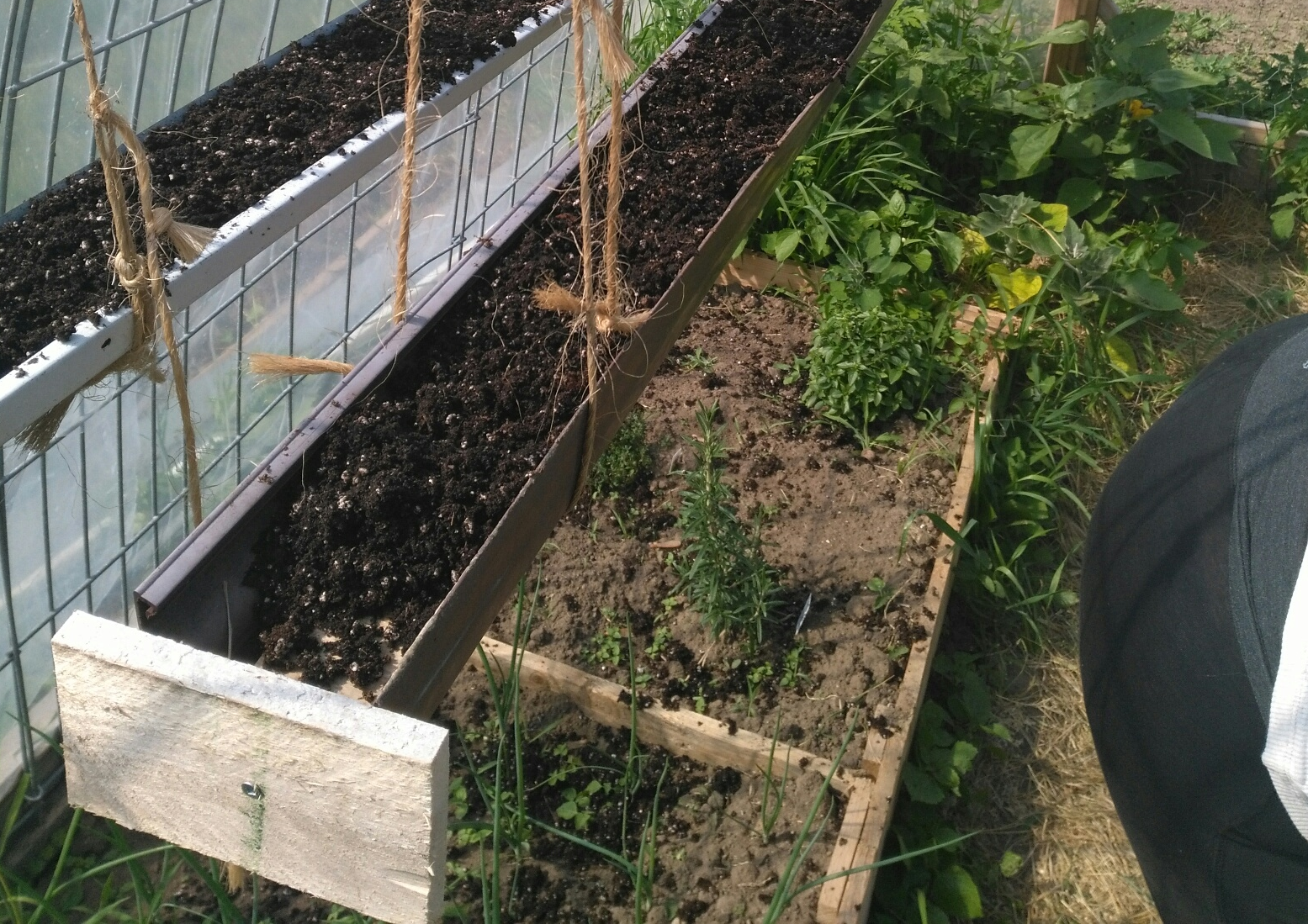 Got some rosemary and basil in the mini-greenhouse. Not my best pic.
Got some rosemary and basil in the mini-greenhouse. Not my best pic.Framed beds for root crops. I use raised beds for all my root crops, and I double dig the beds I use for carrots and parsnips. This year I decided to take this one step further and make framed beds for the early root crops I start in the greenhouse.
You might wonder at these crop choices to take up greenhouse space. Here’s the reasoning. There are much bigger greenhouse growers around me that focus on crops like tomatoes and cukes; they have heated greenhouses, and I can’t bring these crops to market as early as they can. So we’re happy to just get a 3 or 4 week head start, and sell them when ready.
But, the more cold-hardy crops like sugar snap peas, beets, carrots and broccoli are very popular at early markets. For the last couple seasons I’ve been at my local market first with these crops. This is great for early-season income, and helps to lock-in customers.
And because my greenhouse on rails is movable, I can start early cold-hardy cops under cover, move the greenhouse to position 2, and transplant out tomatoes, cukes, peppers etc when th weather warms up.
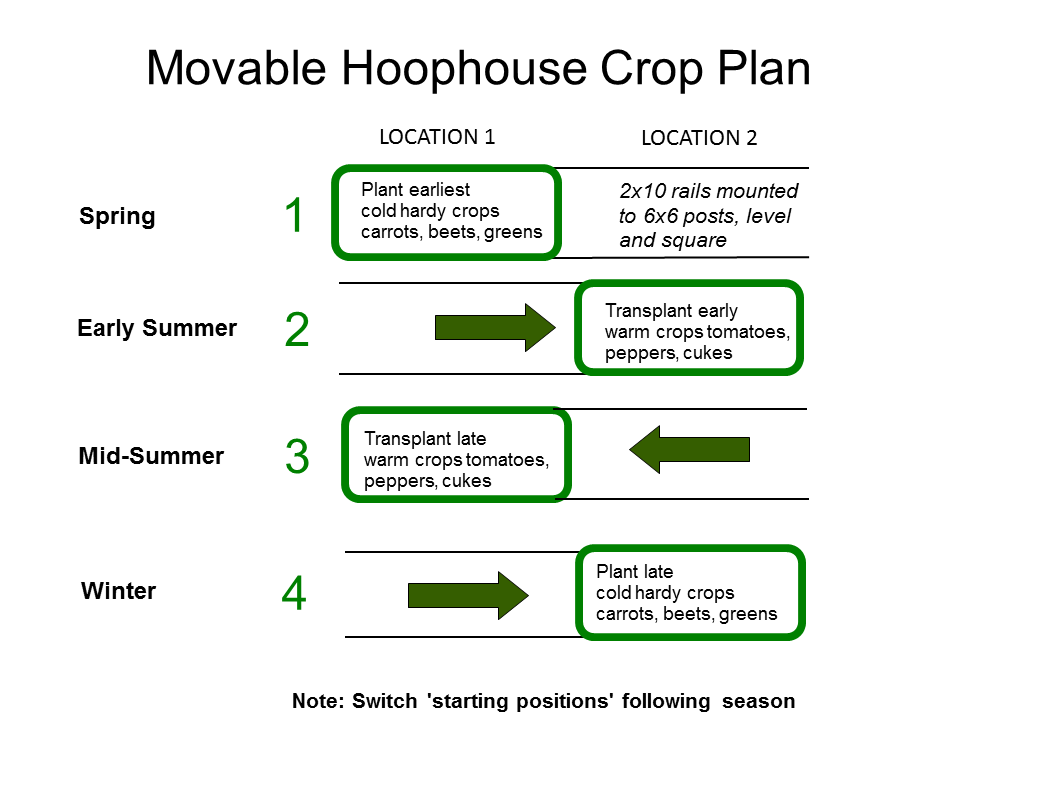 Multi-use movable hoophouse
Multi-use movable hoophouseBack to the framed beds. I found the framing let me make more efficient use of space; I could plant right to the edge of the bed without some plants ‘falling off’ as the season progressed. Helped to keep the mulch tidy in the aisles as well. And I could water with an overhead sprinkler without a lot of run-off eroding the beds. This was an A.
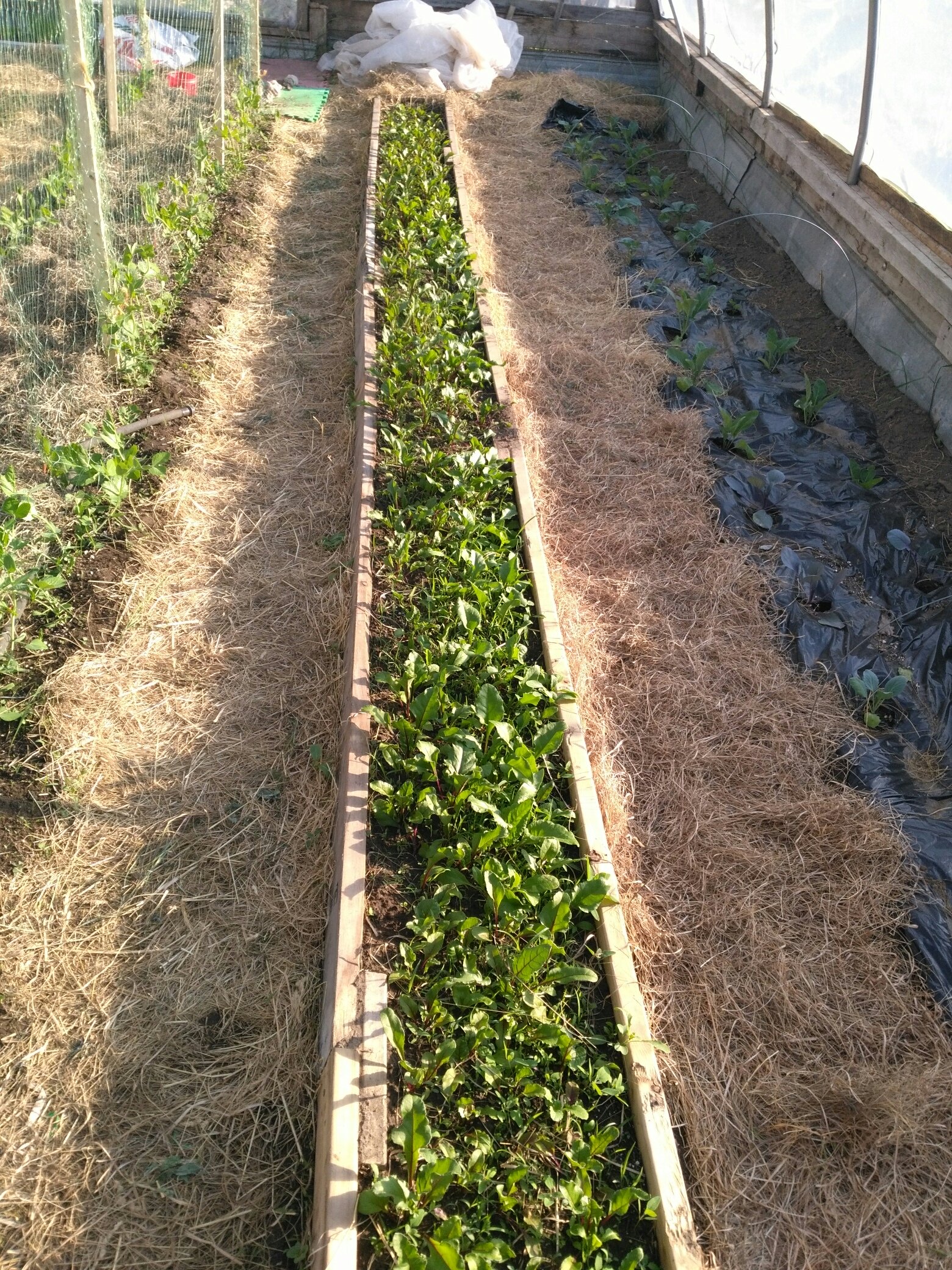 Beet snug in their framed bed
Beet snug in their framed bedNew Hoop Coop. I’ve raised meat birds (chickens, turkeys) for almost 20 years. We day-range them using electric mesh fence and movable coops. And I’ve used the simple design of my original movable coop for many years. The only drawback to the design was the low roof, which made it a little tricky when loading birds for the trip to the abattoir.
I had several 16-foot lengths of cattle panel stored in my barn, so we decided to build a hoop coop. The aim was to build a movable coop with a walk-in height greater than 6 feet.
I framed the base in 2x6, and the end walls in 2x4. Covered the whole thing with left-over greenhouse plastic, and added a couple tarps for shade. I used the first one for a batch of 15 turkeys; I raised a variety from my local hatchery called Mini-Classic. They grow to about 12-15 pounds on average.
The birdies did very well, only lost one, and they came up to weight nicely in about 18 weeks. We sold some to a local restaurant for Thanksgiving, and to a couple long-time customers that buy birds from me every year. A couple went to our own Thanksgiving and Christmas of course.
The hoop coop is such an improvement over my original design that I’ll probably retire the old coops and replace them as needed with hoop coops. A+
 New coop warm and dry = happy turkeys
New coop warm and dry = happy turkeysValue-added goodies at the Merrickville Mid-week Market. I helped to launch this market in 2017, and managed it up until this year. I stayed on as president of the MMMarket but stepped back from hands-on management. I also maintained a table at the market, as another sales outlet and to help support them.
Based on my experience over the last couple years, I decided to try a couple new things. First, I had noticed there were no beverages at the market, so we decided to sell fresh-squeezed cold lemonade. This was a hit, and we sold out just about every market day. I’ll do this one again, and maybe expand into other beverages like watermelon, as local fruits come into season. Definitely an A.
However, our other venture into value-added was only semi-successful. Again, a read of the market and the customer base suggested that pre-made salads and ‘snack-packs’ of ready-to eat-veggies could be a popular item.
So we made up fresh salads each week, according to what came ready in the garden, we made up a couple simple dressings, and packaged them attractively in see-through clam-shell containers.
The results: well, we sold some, but also brought some home every market. We got a lot of compliments on the idea, but this did not translate into sales.
On the plus side, since we only put a couple salads on display and kept the rest in coolers, they kept fine in our fridge at home. We ate lots of fresh salad all week. Not sure if we will try again next season, prepping the salads was quite a bit of work. From a sales perspective, maybe a C+.
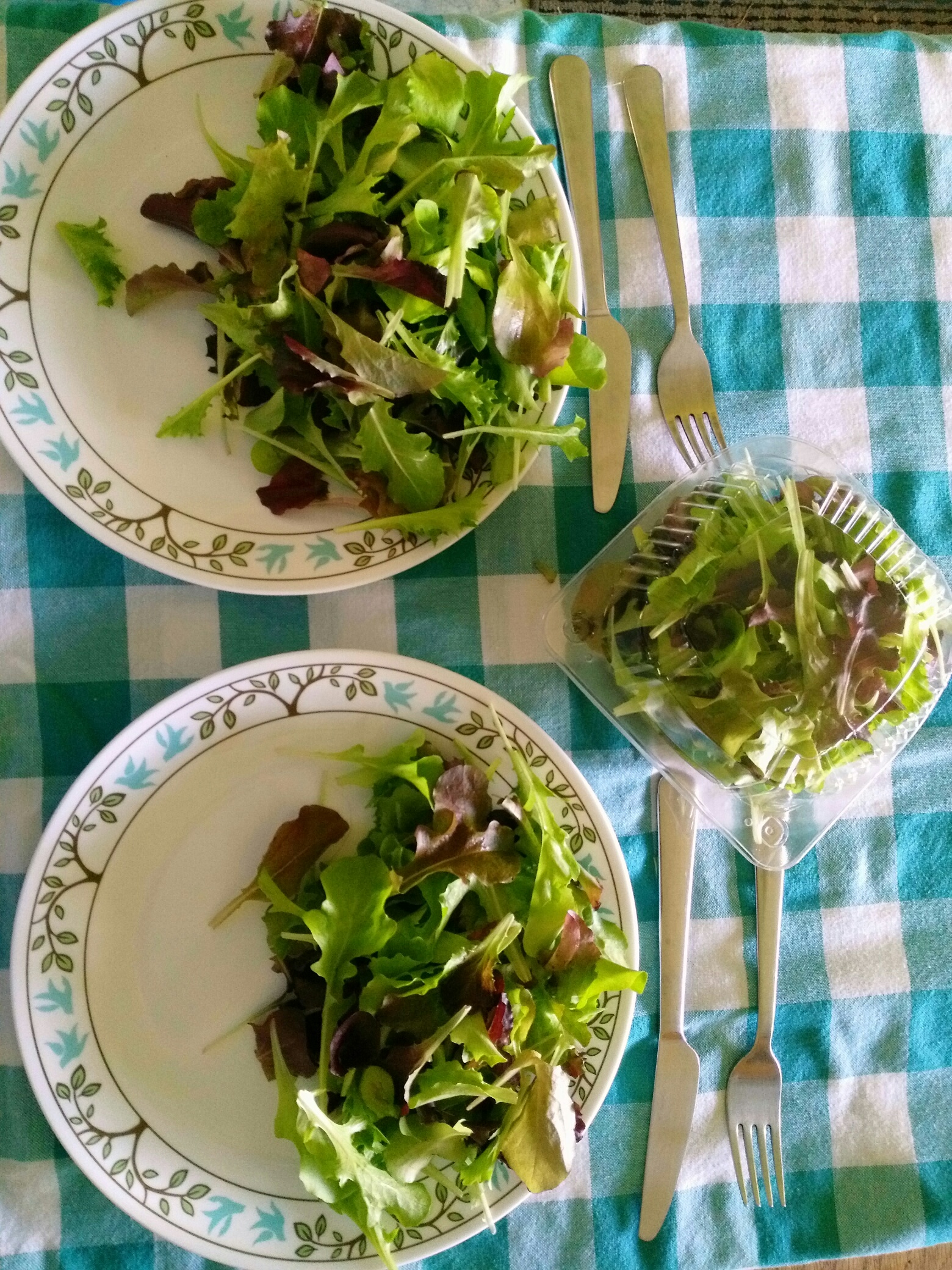 Salads good, sales not so much.
Salads good, sales not so much.The one that didn’t work. Late 2018 I build a deep planting bed against the north wall of my lean-to greenhouse. In 2019, I used the deep bed to start a variety of early crops, including onions, carrots, cukes and eggplant.
The results were disappointing, growth was slow and harvests were scant. Not sure if this was attributable to inadequate soil or sunlight. In the past, the north wall received adequate sun to grow transplants, but perhaps not enough to sustain mature fruiting plants.
The soil might be an issue because we bought it in to fill the bed. We amended it with our own aged compost, but perhaps it was still nutritionally inadequate. This one was a D, but we'll try again next season.
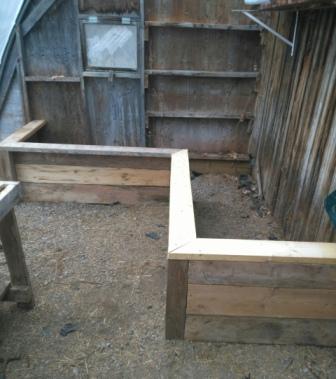 Construction worked OK, it's the crops that failed
Construction worked OK, it's the crops that failedThat's a wrap for 2019, folks. Here's to a great 2020 and some new experiments in learning.
You can see more details of my builds in Bootstrap Greenhouse and How to Raise Meat Chickens.
Cheers!
Scott Kelland
January 2020
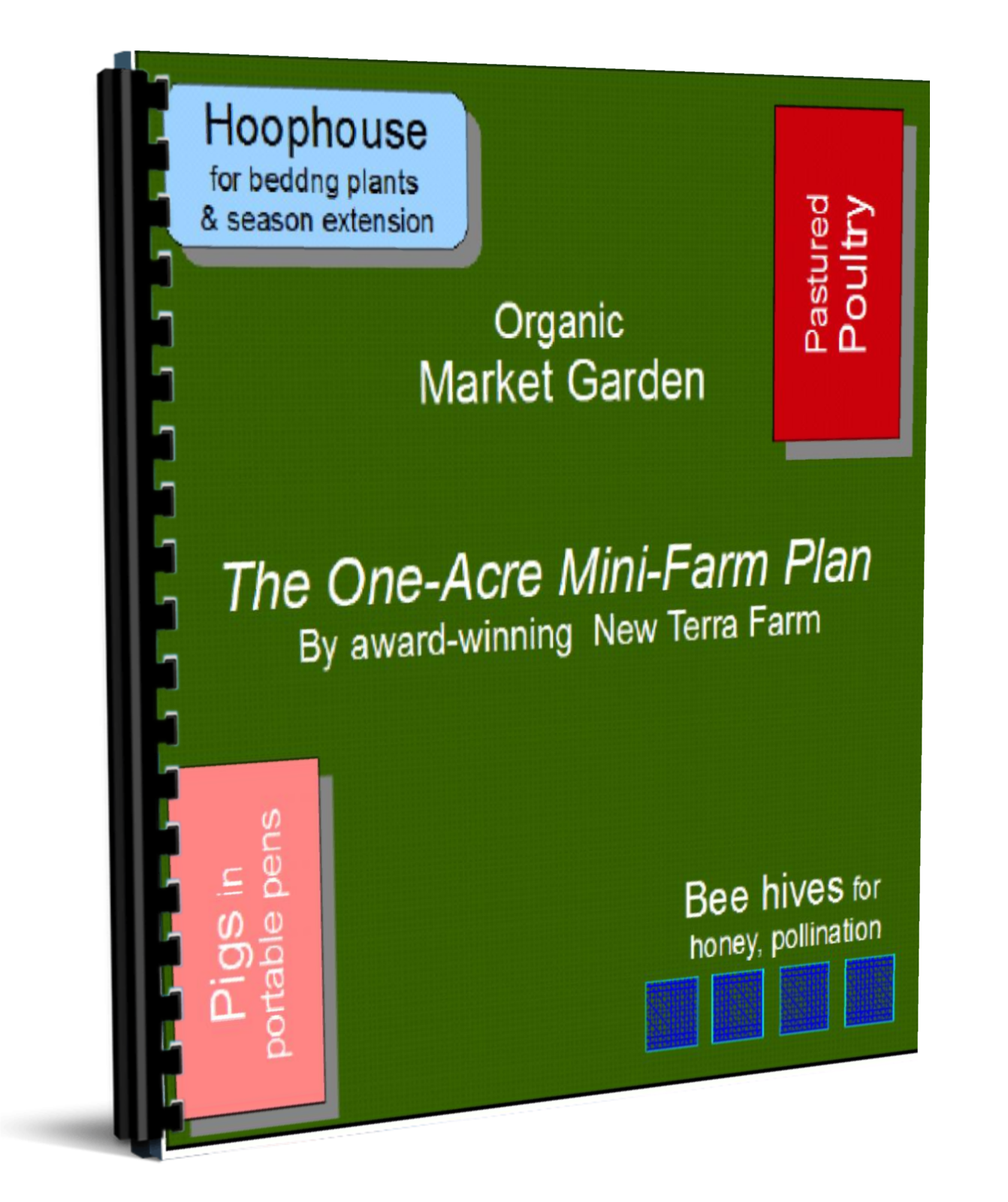
Download my FREE One-Acre Farm Plan and learn how to pigs, chickens and more, integrated with an organic market garden, to make more money from your small property.
Imagine building a profitable and sustainable mini-farm even on a small piece of land.
Enter your email address and your free report will be sent to you right away.
- Home Page ›
- New Terra Farm page ›
- New Terra Farm Review Part 2
Recent Articles
-
Farm grown reviews of products recommended by New Terra Farm
Nov 04, 25 05:17 AM
Find great farm and garden products in my farm grown reviews -
Learn how much to feed chickens before you bring your birdies home
Nov 02, 25 10:36 AM
You've ordered your birdies, now make sure you understand how much to feed chickens fo a healthy and happy flock -
How to start a CSA farm business
Nov 02, 25 06:33 AM
How to Start a CSA Farm Business (and Actually Make Money Doing It)


